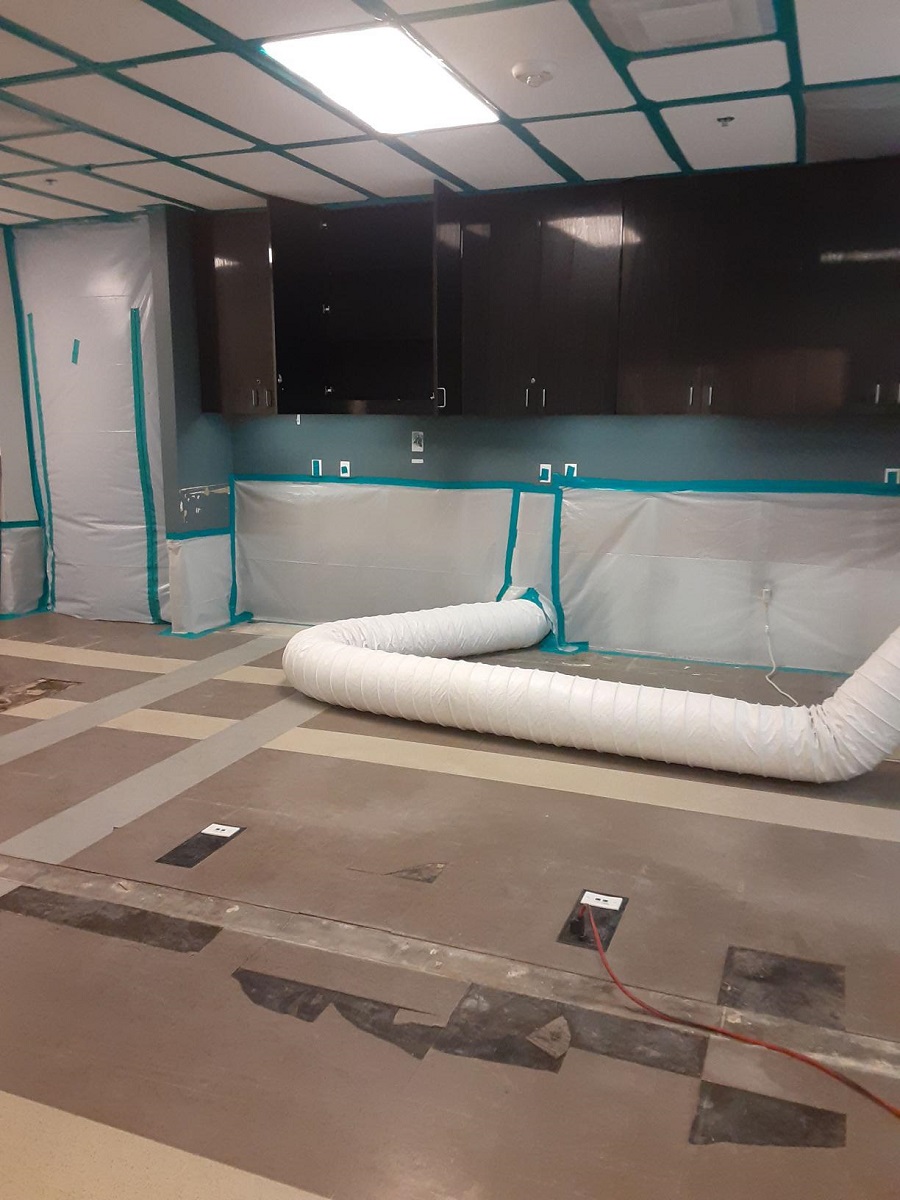Mold Containment in Washington, DC
Mold containment is a critical part of any successful mold remediation project. Its primary goal is to prevent mold spores from spreading to unaffected areas of a property during the cleanup process. This is especially important in Washington, DC, where buildings often face challenges like humidity and aging infrastructure that can lead to mold growth. When mold is disturbed—whether on walls, ceilings, or other surfaces—thousands of microscopic spores are released into the air. Without proper containment measures, these spores can infiltrate HVAC systems, cling to clothing, and travel through ventilation systems, causing cross-contamination and recurring mold problems.
Why Mold Containment Matters
The climate and construction styles in Washington, DC, make mold containment an essential practice for both residential and commercial properties. For example, historic homes and older buildings in the area may have less efficient ventilation systems, which can exacerbate mold spread when spores are released during remediation. If not properly contained, airborne mold spores can settle in clean areas, leading to repeat infestations and posing health risks to occupants.
To prevent this, professional mold remediation teams in Washington, DC, implement strict containment protocols. They create containment zones using heavy-duty plastic sheeting sealed with tape to isolate the affected areas from the rest of the property. These barriers are designed to stop the movement of mold spores, ensuring that they remain confined to the workspace. Zippered doors or airlocks are also installed at access points, allowing workers to enter and exit without compromising the integrity of the containment system. This approach is critical for reducing the chances of cross-contamination.
Effective Mold Containment Strategies
In addition to physical barriers, effective mold containment in Washington, DC, involves minimizing disturbances in the affected area. This includes carefully handling contaminated materials and limiting activities, such as demolition work, that could stir up airborne spores. Professional teams also use advanced equipment to enhance containment efforts. For example, negative pressure systems are often employed to further isolate the contaminated zone.
A negative pressure system works by creating a lower air pressure inside the mold containment area than in the surrounding spaces. This ensures that any air movement is directed inward rather than outward, preventing mold spores from escaping. HEPA-filtered air scrubbers and exhaust fans are typically used to maintain this pressure differential. The contaminated air is filtered and safely vented outside the building, reducing the risk of mold spores lingering in the indoor environment. This method is especially useful in sensitive environments like healthcare facilities, offices, and schools in Washington, DC, where occupants may be particularly vulnerable to airborne contaminants.
To monitor the effectiveness of these containment systems, professionals use tools like manometers to measure air pressure levels throughout the remediation process. Regular adjustments ensure that the containment remains secure until the mold removal is complete.
Protecting Health and Property in Washington, DC
Mold containment is not just about stopping the spread of spores during remediation; it is also about protecting the health of building occupants. Mold exposure can cause respiratory issues, allergies, and other health problems, particularly for individuals with pre-existing conditions. By isolating the contaminated area, remediation professionals can focus on safely removing the mold without compromising indoor air quality in the rest of the property.
In Washington, DC, where properties range from historic homes to modern office buildings, mold containment is an essential step in maintaining the integrity of the structure and ensuring the safety of its occupants. Without proper containment, even a small mold problem can turn into a widespread issue, damaging property value and increasing remediation costs.
Why Professional Mold Remediation Matters
Professional mold remediation services in Washington, DC, are critical for ensuring effective containment and thorough cleanup. Trained technicians follow industry standards to assess the extent of the mold problem, set up containment zones, and use EPA-approved products to eliminate mold at its source. Unlike DIY methods, which often fail to address the root cause of mold growth, professional remediation ensures that all mold spores are removed, reducing the likelihood of future infestations.
Once the remediation and containment process is complete, professionals conduct air quality testing to confirm that the indoor environment is safe for occupancy. This final step provides peace of mind for property owners and ensures that the remediation efforts were successful.
Conclusion
In Washington, DC, mold containment is a key aspect of protecting homes, businesses, and the health of their occupants. By using advanced techniques like negative pressure systems and physical barriers, remediation teams can prevent cross-contamination and ensure a thorough cleanup. For property owners, investing in professional mold remediation services is the best way to address mold issues effectively while safeguarding their property and health.




